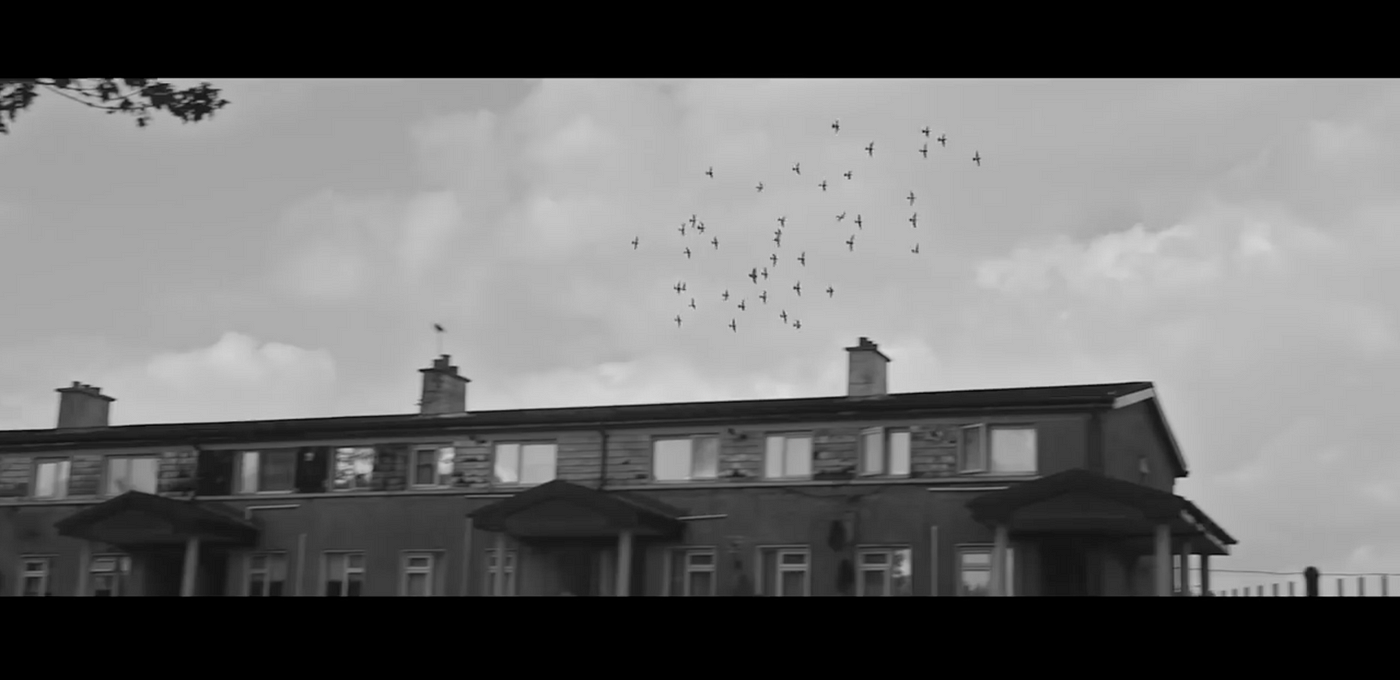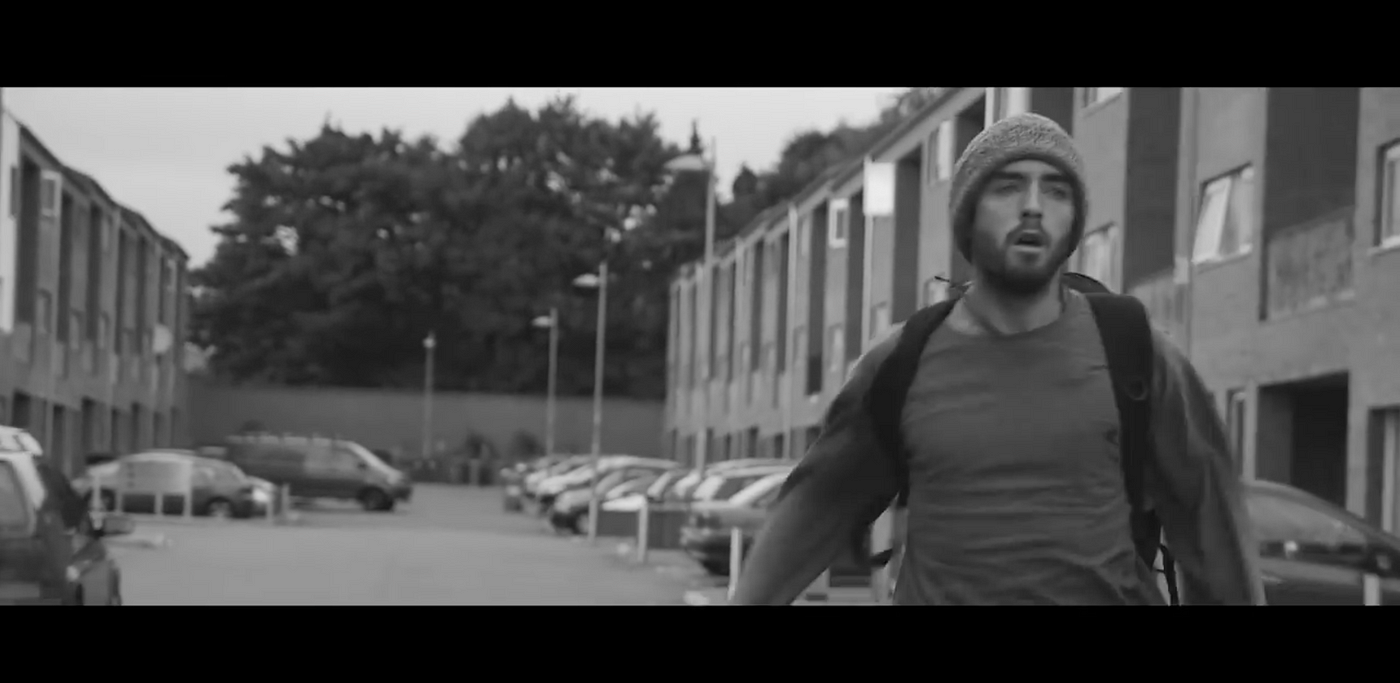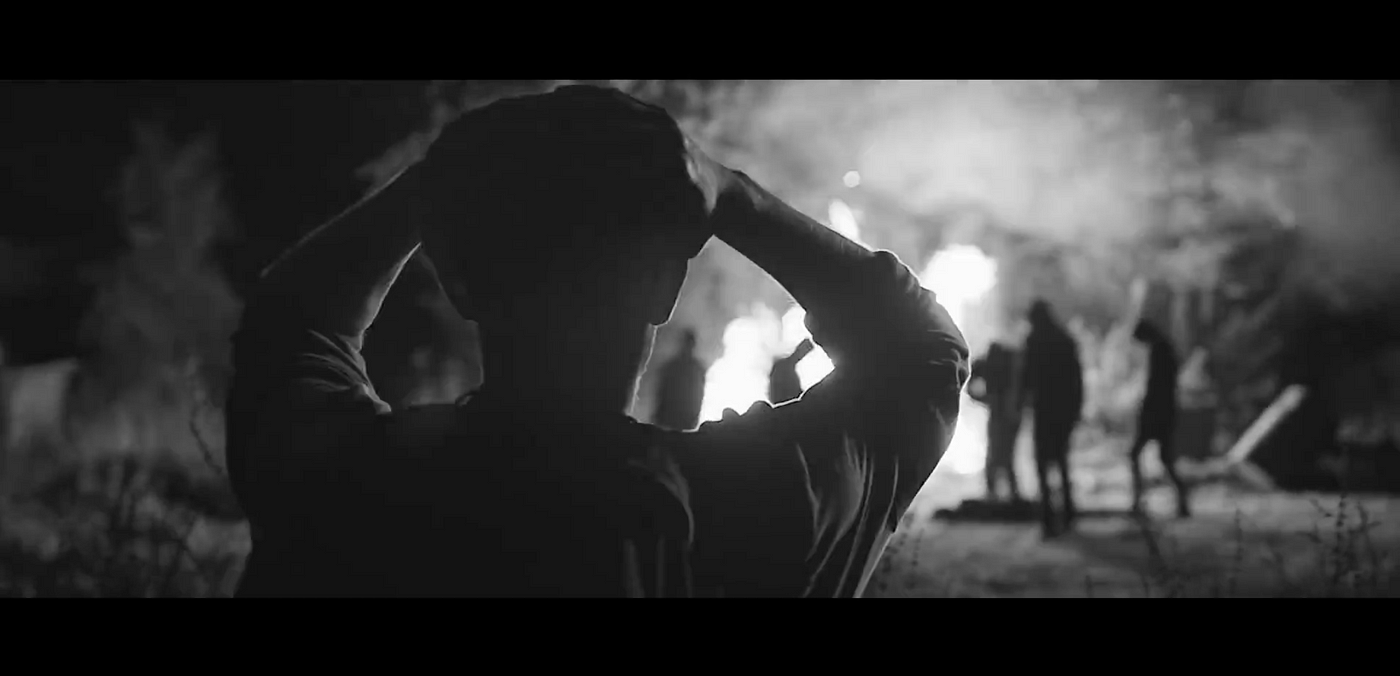What Is the Meaning of the Song Take Me to Church
The Meaning Backside 'Have Me To Church building'
Hozier's Music Video: An Analysis
The music video for 'Accept Me To Church,' a vocal by Hozier, features a narrative based on the Catholic Church's discrimination against homosexuality. The purpose of this music video is to inform the audience of homosexuality and discrimination— an consequence that is withal unresolved in many parts of the world. The video follows conventions by addressing the controversial event of attacks lead on homosexuals, and was filmed as a response to Russian federation's antipathy towards homosexuality and gender variance.
Featuring scenes of strong violence that aren't fabricated explicitly visual — cuts and close-ups don't allow the audience a full view of the scenes — the video encouraging the audience to identify the presence of violence, empathize for the characters, and realise the wrongs of discriminating against liberty of sexuality. The music video doesn't characteristic whatever artists singing or playing instruments, so therefore information technology isn't a performance, however it offers an interpretive story for active audiences to analyse.
Stylistically edited in black and white, reflecting the tragic and downbeat visuals, the music video helps to plant the temper of the song and may correspond how some people meet the world as black and white, manifestly and emotionless — refusing to accept some ways of life, such as sexuality other than heterosexuality. The music video is cutting to the beat, which helps fit the visuals to the footstep of the song, and makes the music video as a whole more rhythmic and aesthetic. The step of the editing and transitions is consistent throughout the music video, which may exist a representation of how zip seems to change when it comes to guild accepting homosexuality and freedom of love.
The song is a has a slow stride — conventional being part of the indie-stone genre of music. Due to the strong and emotional theme of homophobia, the song was used to stand up upward against bigotry in certain parts of the world, such every bit Russia and Ireland — Hozier's country of origin. This meant that the song was recognised and marketed both positively and negatively around the world; still, this advertisement helped to promote Hozier, and expanded his audience.

The opening shot of the music video is of a bonfire — the audition volition instantly recognise this as a sign — the fire becomes a signifier, connoting danger and aggression, though potentially passion and/or power. It also foreshadows the dark plough that the narrative will take after on in the music video. A shot of a box being chained, padlocked and buried, which represents secrecy and mystery. It's later revealed that the grapheme that the box belongs to is homosexual, so therefore the box could represent the secrecy of his sexuality, and the grapheme burying and locking away his feelings. The lighting in these opening shots is low-fundamental and dim, which once more, represents secrecy hidden in the shadows, and possible danger lurking. It may as well represent the dreary emotions and struggle of the characters in the narrative.
The lighting throughout the music video is dreary, without any potent highlights, and frequently harsh shadows and silhouettes. The utilise of shadowing characters may stand for the secrecy of their relationship, and the lack of highlights may exist a hint to the sadness and dreariness caused by social club'due south discrimination. This bespeak is backed upward furthermore by the pathetic fallacy of the conditions; throughout the music video the heaven is clouded over, which often connotes sadness, blandness and sorrow. Towards the cease of the music video, the lighting becomes dark as we transition to nighttime time. This is linear to the dark turn that the narrative takes, and will brand the audition feel more tense due to the connotations of darkness — secrecy, danger and mystery.

Early in the music video, there's a broad/establishing shot of a flock of birds, soaring above rooftops towards the clouds. This may represent the liberty the birds have, to go and do every bit they please, whereas the two main characters in the music video are stuck in the world of judgement and discrimination. This juxtaposition will depict audiences to sympathise for the two characters, and they'll likewise be intrigued, and want to know how the narrative unfolds. The clouded heaven might correspond the birds soaring above the sorrow, into the bright bluish heaven above and beyond. Furthermore, the birds could correspond the ii principal characters, who ignore the discrimination confronting homosexuality, and they express their love for each other. The dreary, night lighting makes this shot appear mysterious and lifeless, reflecting the lives of the two main characters. In addition, the nighttime lighting is also a common convention of the rock genre that Hozier'due south song fits into. A depression shot is used, looking upwards at the heaven, and the photographic camera pans from left to right — this allows us to establish more than of the setting, and follow the flock of birds across the screen. Overall, the representation theory is applied extensively in this scene; active audiences are fatigued to read between the lines, and interpret the visuals every bit signs of the characters tormented lives.
A scene in the music video, which shows one of the master characters running down a street, uses a handheld camera technique. This helps to convey their urgency and stress. It also insufficiently suggests that it'southward raw, unplanned footage — similarly to homemade videos — which makes the scene more convincing and relatable for the audience, encouraging an emotional connection between the character and viewer. Additionally, the utilise of a cantered photographic camera angle suggests confusion, which ofttimes disorientates the audience and creates a sense of unease and alarm.

The two protagonists' costumes are bland and unspecific, and weren't chosen with the intention of continuing out or grabbing the audiences' attention. This may be a dystopian insight as to how homosexuals react to discrimination— attempting not to stand out, to remain unnoticed. One of the main characters is wearing a beanie chapeau, a haversack, and has dishevelled facial hair. These are all features that stand for him equally a troublemaker, and erects ideas and representations such as a drug dealer or thief. The hat implies a need to hide his advent, and the bag implies that the graphic symbol has subconscious possessions, like drugs. The unkempt facial hair represents the character as careless, unorganised and shady, although the narrative of the music video shows the character as a harmless and passionate man. This proves to the audience that society near ever applies stereotypes, and upon seeing this character presented in said way, he's represented as a danger and a menace to society.
The scene of the main character being dragged against his volition at night uses dark, shadowy lighting to convey danger, and keep the audience engaged with fear. 1 graphic symbol holds a flaming torch; the fire becomes a sign for his anger and dangerous intentions, equally well every bit the threat the kidnappers pose towards the protagonist being dragged. The group of kidnappers all have their hoods up and faces covered — this costume option shows that they all have something to hide — making the audience feel wary of trusting them, and therefore sympathise farther for the protagonist.

A wide shot is used to capture all of the actions within the scene — the protagonist on the floor, and the size of the group dragging him — which will increase the audience's date and fear for the protagonist. The character positioning within this scene shows the grouping members standing up whilst the principal graphic symbol is on the floor; this positioning represents the two different levels of hierarchical power, and exaggerates the control and dominance that the group has in the scene. They announced to be holding him dorsum, dragging him beyond the ground by his arms and shoulders. This restraint may connote the chief character'due south metaphorical struggle to express his love for the other master character, as parts of social club discriminates against homosexuality.
The last shot of the music video shows one of the two main characters, standing in the foreground, facing abroad from the camera. He looks over at the group of people, kick his partner on the ground past the burn down. The shot is framed somewhere between a head and shoulder shot and an over the shoulder shot; this type of framing allows u.s. to see the betoken of view of the protagonist in the foreground, but also look upon the scene as if we were standing behind him. The audition gets to discover the scene as if they were almost part of it, simply they tin't exercise anything nigh it — this encourages the audience to empathise for the lovers.
The lighting used in the final scene creates strong silhouettes, the only source of calorie-free being the fire — this represents the anguish and tension of the scene, and could also reflect that the grouping of people abusing the master character are the source of the darkness and hatred, and the vivid white burn could represent the passion of the two lovers, and how it's dying to burn brightly. The scene doesn't have whatsoever lyrics as the song comes to an end, which might exist a stylistic pick with the intention of making the audience focus on the visuals and activity, and the message that the visuals of the scene convey. The editing used at the end of this scene brings the music video to an end abruptly. Instead of fading out, as a passive audience might expect, it cuts direct to blackness. This might be a technique used to represent the grapheme's hope of peace, credence and happiness, and how it is unexpectedly cutting-off and of a sudden comes to an end. Cutting to blackness is too a convention of many stone narrative videos to express the fast-paced, activeness packed atmosphere, but notwithstanding isn't common for indie genre music videos. This juxtaposition of genre conventions could be to show how it is a hybrid-genre music video.

The lyrics, which frequently seem unrelated and disruptive, were written with deep and subtle meaning related to the music video'south narrative; homosexuality in Russia. "Growing up in Ireland, the church building is always there — the hypocrisy, the political cowardice. The video has the aforementioned theme — an organisation that undermines humanity," Hozier spoke to the media in Ireland when being interviewed nigh his lyrics — the line, "I was born sick, just I honey it. Command me to exist well" was inspired by Elizabethan dramatist Fulke Greville's 1554 poem 'Chorus Sacerdotum', that speaks of mankind beingness "created sick, commanded to be sound". Hozier wanted to draw the past into the music, to inform the audience of how long the discrimination confronting homosexuality has been around, in order to make the audience think nearly the tragedy and emotion referred to in the lyrics.
As a summary of my analysis, the music video and lyrics of 'Accept Me To Church' addresses discrimination against sexuality through means of building an emotional connectedness with the two primary characters, stripped-dorsum by the lack of names, oral communication, and colour, creating a articulate, simplified bulletin. Hozier describes his piece of music and the video as being about 'asserting yourself and reclaiming your humanity through an deed of love. Turning your dorsum on the theoretical thing, something that'southward non tangible, and choosing to worship or love something that is tangible and real — something that can be experienced.'
Source: https://medium.com/thelatespace/hoziers-take-me-to-church-b27663bc516f
0 Response to "What Is the Meaning of the Song Take Me to Church"
Post a Comment